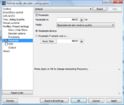- Thread starter
- #751
If you do another detailed log (with the accurate clock and multiplier) I'll push the numbers through see what happens. Do you have Excel - and what version?
Please find the logs attached. _with_mul.log is the one where "*" is used and the normal is the "/".

 Scotland
Scotland

